Book NOW for $1 £1 €1 • Flexible Payments • No Change Fees • Private Departures Available
- Home >>
- India Travel Advice
India Travel Advice
Getting to India
India, also called The Republic of India is the 7th largest country in the world. Bordering Pakistan, Afghanistan, China, Nepal, Bhutan, Myanmar and Bangladesh, India is surrounded by 3 seas - the Arabian Sea, the Indian Ocean and the Bay of Bengal.
- London to New Delhi is about a 9 hour flight
- Los Angeles to New Delhi takes around 22 hours
- Cape Town to New Delhi takes around 24 hours
- Sydney to New Delhi is about a 17 hour flight
- New York to New Delhi takes around 15 hours
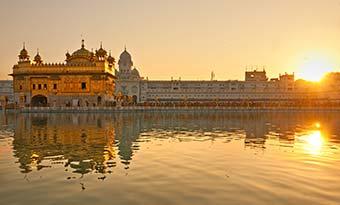
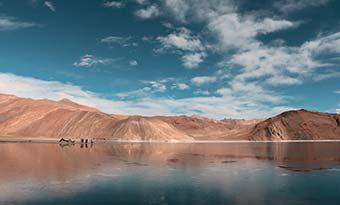
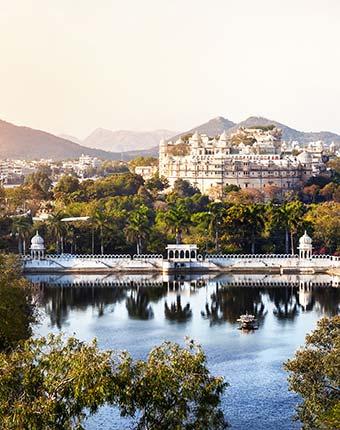
Main airports
in India
All states in India now have at least one international airport and two domestic airports, so you have ample choice depending on where you plan on beginning your holiday to India. The 5 main airports in India are; Delhi Indira Gandhi International Airport (DEL), Chhatrapati Shivaji International Airport (BOM), Kempegowda International Airport (BLR), Chennai Anna International Airport (MMA) and Kolkata Netaji Subhash Chanda Bose (CCU).
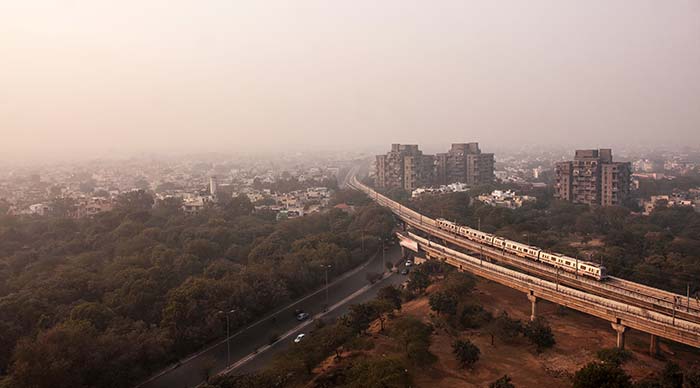
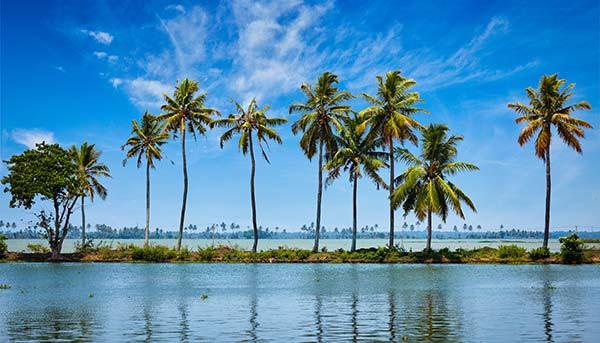
Geography &
landscape of India
India has one of the most diverse landscapes in the world. From dense forests and lush jungles to paradise islands. From barren deserts to soaring mountain ranges. Add this to the sprawling coastlines, bustling cities, endless salt flats and verdant, central highlands, and it seems like India has a little slice of every corner of the world.
Culture, religion
and etiquette
India is one of the most diverse countries in the world when it comes to religion. 79.8% of the population practice Hinduism, 14.2% have Islamic beliefs, 2.3% practice Christianity, 1.7% practice Sikhism and 0.7% are Buddhists. When visiting Hindu temples, it is respectful to remove your shoes before entering (this goes for entering people’s homes too).
Family is one of the most important values in India. Small businesses are usually family-run and will strive to remain that way. Arranged marriages are very common in India. The concept of marriage is highly respected, which has led to a very low divorce rate. Dining etiquette might also be a little different here compared to other countries. Indians eat with their hands instead of using cutlery. (The trick is to use chapatis to scoop up the food!) Only use your right hand though, as the left hand is considered dirty.
As for clothing, steer clear from wearing tight or revealing clothing. It will get you a lot of unwanted attention and will likely offend some people. Outside of Goa and some rebellious college students, Indian women will never wear jeans or skirts above the ankle and will always have their shoulders covered.
Heavy overcrowding and overpopulation has led to personal space being ‘compromised’ in India. Don’t expect people to keep to the personal boundaries you are used to. If there is a jeep which holds 6 people, you can be certain they will fit in at least 12. Another thing to be aware of is to not show affection in public, which includes holding hands. This is often viewed as a reference to sex and therefore deemed inappropriate.
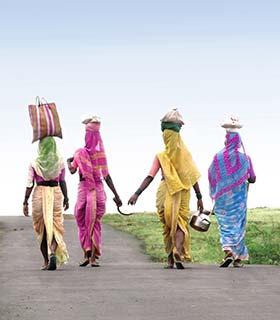
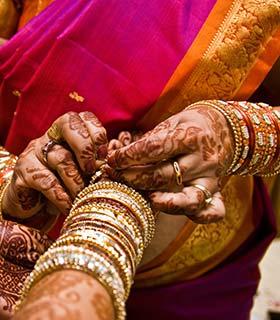
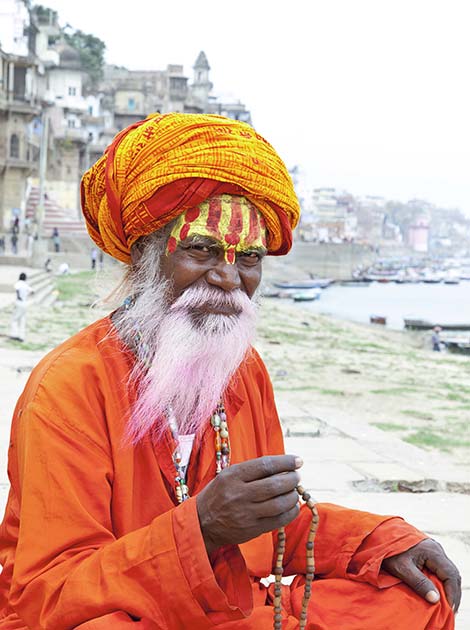
Top tip!
Keep small notes such as 10 / 20 rupees in a separate section of your purse to avoid letting others know how much money you have on you.
Photography
India is one of the most vibrant, colourful and interesting countries in the world and chances are, you will want to take a lot of photos! When it comes to taking photographs of people, most will gladly oblige. However, make sure that you get their permission before. When it comes to temples, look out for posters. Some strictly prohibit cameras and some allow it. Photography is also prohibited in airports and military installations. Varanasi is one of the most photogenic cities in India, however taking pictures of the burning ghats or the deceased is also strictly prohibited. Be aware that you will often have to pay an additional amount to take your camera into attractions and sites such as the Red Fort in Delhi.
Languages spoken
Being the second most populous country in the world, it should come as no surprise that there are thousands of languages spoken in India. Hindi is the official language of the central government of India, with English being the sub-language. However the Constitution of India recognises 23 official languages and two official classical languages - Sanskrit and Tamil.
- Bengali/Bangla is spoken in the Andaman & Nicobar Islands, Tripura, West Bengal
- Bodo is spoken in Assam
- Dogri is spoken in Jammu & Kashmir
- Gujarati is spoken in Dadra & Nagar Haveli, Daman & Diu, Gujarat
- Hindi is spoken in the Andaman & Nicobar islands, Arunachal Pradesh, Bihar, Chandigarh, Chhattisgarh, Delhi, Haryana, Himachal Pradesh, Jharkhand, Madhya Pradesh, Rajasthan, Uttar Pradesh & Uttarakhand
- Kannada is spoken in Karnataka
- Kashmiri is spoken in Jammu & Kashmir
- Maithili is spoken in Bihar
- Malayalam is spoken in Kerala, Andaman & Nicobar Islands & Lakshadweep
- Manipuri/Meitei/Meithei is spoken in Manipur
- Marathi is spoken in Dadra & Nagar haveli, Daman & Siu, Goa, Maharashtra
- Neali is spoken in Bihar
- Oriya is spoken in Orissa
- Punjabi is spoken in Chandigarh, Delhi, Haryana, Punjab
- Santhali is spoken in Santhal tribal communities of the Chota Nagpur Plateau
- Sindhi is spoken in the Sindhi community
- Tamil is spoken in Tamil Nadu, Andaman & Nicobar Islands, Kerala, Punucherry.
- Telugu is spoken in the Andaman & Nicobar Islands, Andhra Pradesh
- Urdu is spoken in Andhra Pradesh, Delhi, Jammu & Kashmir, Uttar Pradesh, Tamil Nadu
Most of the people in major cities will have some form English, especially if they are selling to tourists or work in the hospitality and tourism sectors. However the more you venture off the beaten path, the more you will come across people which don’t speak English at all. It’s good practice to learn a few key phrases in the most common language of the state you are in.
Capital city
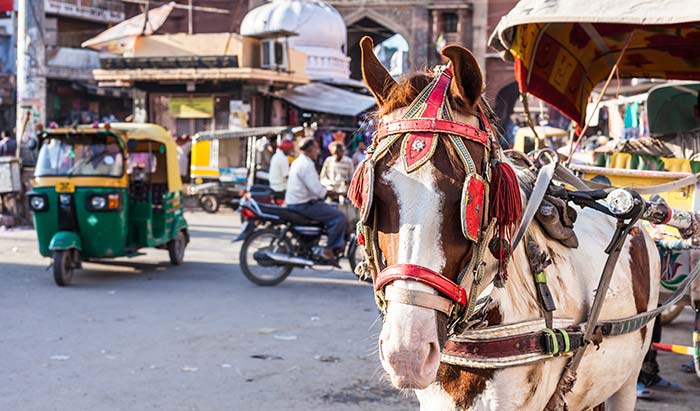
New Delhi
The capital city of India is New Delhi which is about 16 km from the main airport - Indira Gandhi International Airport (DEL). The city of New Delhi has a population of 257, 803 however the metro area has over 26 million residents. Many tours of India begin in New Delhi, including the ‘golden triangle’ tours. The city is a perfect example of where old meets new. With one of the best metro systems and airports in the world sitting beside monuments dating back to 1193 CE. Everything you need can be found in New Delhi - bars, restaurants, shops, markets, galleries, attractions, street food and a great nightlife!
Visas
First thing to know is that a visa will not be issued upon arrival at the airport. You will need to organise this before leaving your home country, either at the embassy or consulate. This can take over a month so make sure you begin the process well in advance.
The only people who do not require a visa to enter India are from the following countries: Bhutan, Nepal, Maldives and holders of PIO (Person of Indian Origin). An OCI (Overseas Citizen of India) also only needs a passport to enter. Everyone else will need to apply for a visa. A tourist visa for India is valid for 6 months.
There are a few areas in India which require additional permits in order to cross the borders, however these can be obtained and issued on the same day. The permit areas are: Manipur, Mizoram, Arunachal Pradesh, Nagaland, Sikkim, parts of Jammu & Kashmir and the Andaman & Nicobar Islands.
Vaccinations & travel health
The CDC and the WHO advise for the following routine vaccines to be up to date when visiting India: Measles, Mumps & Rubella (MMR), Tetanus, Diphtheria & Pertussis (TDAP), Chickenpox, Shingles, Pneumonia, Influenza, Meningitis.
They also recommend the following vaccinations for travel to India: Hepatitis A, Hepatitis B, Typhoid & Cholera. Japanese Encephalitis is recommended if travelling to any region outside of Dadra, Daman, Diu, Gujarat, Himachal Pradesh, Jammu & Kashmir, Lakshadweep, Meghalaya, Nagar Haveli, Punjab, Rajasthan & Sikkim. Rabies is recommended for long-term travellers and those who may come into contact with animals. Yellow Fever & Polio is also required if you are travelling from a country with risk of yellow fever or polio transmission.
The risk of malaria is present through most of India apart from the following areas: Himachal Pradesh, Jammu and Kashmir and Sikkim. You will need to see your GP to confirm the areas that you will be travelling in and obtain prescription medicine. This will usually need to be taken before, during and after your trip so make sure you do this well in advance.
Is it safe to drink tap water in India?
The short answer is no. It is not safe to drink tap water in India. You may get offered ‘treated’ tap water in some nice restaurants but we would still advise you to stick to bottled mineral water, no matter what. That goes for ice too and any food products which may have been washed with water such as a salad.
Electricity and plugs in India
The plugs and sockets in India are type C, D & M. The standard voltage is 230V with a frequency of 50 Hz. Type C fits a 2 round prong plug, and both types D and M fit a 3 round prong plug.
Emergency calls
It is always a good idea to have a few important numbers saved on your phone in case of emergencies. The most important ones in India are:
- 112 is the national emergency number (police, fire and ambulance)
- 100 is the number for the police service
- 101 is the number for the fire service
- 102 is the number for the ambulance service
Travelling as a single woman in India
You might often get discouraged from travelling India alone as a solo female, but don’t let all the ‘horror stories’ and negative media articles defer you. Every country has crime and every country has horror stories, you just need to travel safe, have you common sense well in-check and you will most likely be completely fine. With such a large population in India, you are never too far from help. You could be walking in the middle of the desert and even there you will surely pass at least one other person. That is India. Here’s a few tips on staying safe.
- Make a scene Some Indian men may try their luck with a bum squeeze as you walk by. The best thing to do in these situations is to make a scene. If women are around, they will help you - always. As will the majority of other men if you are expressing alarm.
- Dress appropriately If you wear revealing clothing, short shorts, short skirts, or are showing your shoulders or stomach, it will draw attention to you. Indian people do not wear outfits like this and where the majority of stares may be innocent and curious, some might not be. It’s best to not draw too much attention to yourself.
- Organise a pick-up Unfortunately if you are travelling by overnight bus, you will often be arriving in the middle of the night. Arrange for someone from your hotel to meet you at the bus stop so you are not travelling alone at night.
- Get a phone Buy or bring a phone which works internationally and install a local SIM card. Store some emergency numbers and apps on their straight away and keep a battery pack with you in case of emergencies.
- Call home Make sure at least one person knows where you are and when you are supposed to call next. Give them the names of the hotels you are staying so that if you fail to call them, they can check on you.
- Use the women-only zones Most public transport services (and sometimes even restaurants) have a section just for women.
- Speak up If a situation is making you uncomfortable, let them know. If it persists, calmly move on.
- Don’t worry about the staring Lastly, staring is not an offensive action in India, most of the time it is just an expression of curiosity, so don’t be alarmed. If you feel that something isn’t quite right, ask them to stop. If they persist, ask people to help you or make a scene.
Wifi and internet access
Unless you are in really remote locations around India, wifi shouldn’t be a problem. Cafes, restaurants and hotels usually always have access to wifi. However, it might not always be a strong connection. You will easily be able to send messages and emails, however streaming can quite often be an issue. Cyber cafes are also readily available in most towns and cities, charging a fixed amount per hour.
Time zone
New Delhi, India
India (IST) is 4 hours and 30 minutes ahead of London (GMT), 12 hours and 30 minutes ahead of Los Angeles, and 9 hours and 30 minutes ahead of New York. India runs on India Standard Time and does not switch to daylight saving time. To calculate the time difference from your current location, visit timeanddate.com.
Getting around
India has a huge range of transport option - aeroplanes, trains, buses, sleeper buses, sleeper trains, rickshaws, bicycle-rickshaws. The list just goes on. As a rule, taxis are best avoided as they are much more expensive. For short distances, rickshaws are much more friendly on your wallet and if you need to travel further, then a bus or train would be a better option.
Taxi
Taxis are often the most expensive way to travel and the taxi drivers will likely make up a higher price if they see a foreigner with a backpack. To make sure you are getting a fair price, ask your hotel how much it should cost, then you have a figure to aim for.
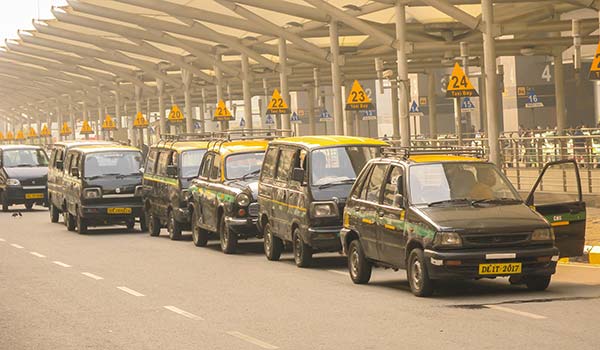
Aeroplane
If you have the funds available and are travelling long distances, a domestic flight is usually the best option. They are comfortable, relatively affordable, quick and take a lot of the hassle out of travelling. The best domestic airlines in India are Air India and Jet Airways which you can either book through their sites or via Cleartrip or Make My Trip.
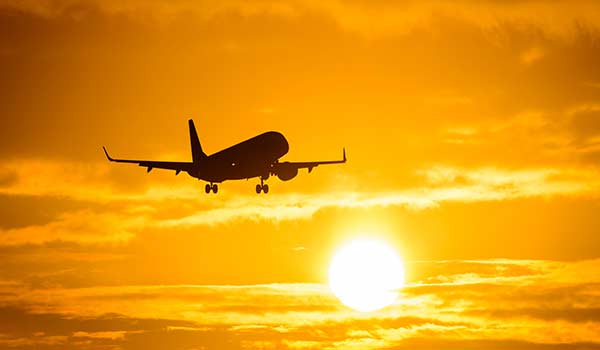
Train
India has one of the most well-connected rail networks in the world and once you know how to make a booking, it is often the easiest way to travel. There are many ways to book - via phone, visiting the station you will be leaving from, or booking online. Cleartrip is a great online booking service which is very user friendly. All trains have a variety of classes to choose from:
- 1A - AC First Class Your own air-conditioned booth.
- 2A - AC 2 Tier 2 levels of beds in a shared compartment.
- 3A - AC 3 Tier 3 levels of beds with air conditioning.
- SL - Sleeper Class beds without air conditioning but often quite dirty.
- 2S - Second Seating Class No assigned seating and tend to be quite cramped and uncomfortable.
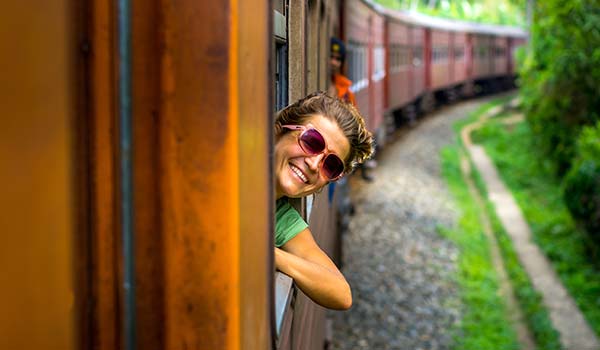
Bus
Travelling by bus is sometimes the only way to get to a town when it doesn’t have a train station. The standard is a very mixed bag. Some will be air conditioned and have comfortable cabins, yet others will be seats only. Make My Trip. is a great online service for booking buses which also notes the type of bus (air conditioned, sleeper etc). However, for a short, local bus journey, you will not be able to book a seat. There may not be any seats available, but the driver will still let you on to stand.
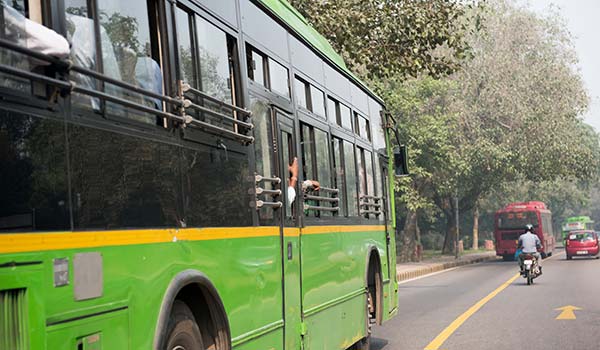
Rickshaw
Rickshaws work much like taxis but are usually much cheaper. You will have to flex your haggling skills though as the drivers will inevitably start at a much higher price. The going rate for tourists (there will be a different price for locals) is around ₹25 ($0.35) per km.
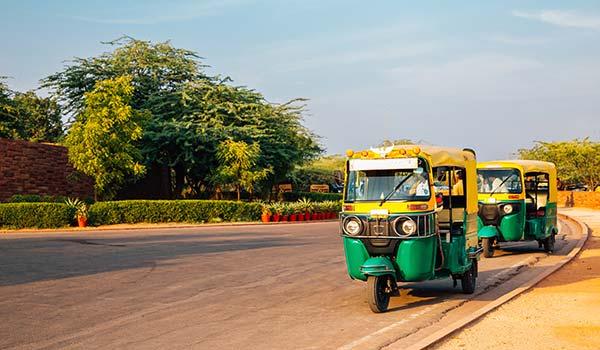
History
The history of India is as old as human civilisation itself. History begins with the birth of the Indus Valley Civilisations and the Aryans which flourished between 2800 BC and 1800 BC. In the 5th century Buddhism spread throughout Asia under the rule of Emperor Ashoka. Islam came to India in the 8th century, and by the 11th, had also established itself as a political force and the Delhi Sultanate was formed. This was later overthrown by the Mughal Empire where India came back into political unity.
Europeans came to India in the 17th century whilst the Mughal Empire began falling, leaving the English to swoop in and take rule. In 1857, the people of India rebelled in a bid to restore independence, but failed. Queen Victoria was crowned as Empress of India whilst India spent the next few decades striving for independence, finally obtaining it in 1947.




